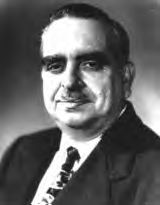Jesús T. Piñero facts for kids
Quick facts for kids
Jesus Piñero
|
|
|---|---|
 |
|
| Governor of Puerto Rico | |
| In office September 2, 1946 – January 2, 1949 |
|
| Preceded by | Rexford Tugwell |
| Succeeded by | Luis Muñoz Marín (elected) |
| Resident Commissioner of Puerto Rico | |
| In office January 3, 1945 – September 2, 1946 |
|
| Preceded by | Bolívar Pagán |
| Succeeded by | Antonio Fernós-Isern |
| Personal details | |
| Born |
Jesús Toribio Piñero Jiménez
April 16, 1897 Carolina, Puerto Rico |
| Died | November 19, 1952 (aged 55) Loíza, Puerto Rico, U.S. |
| Political party | Popular Democratic |
| Other political affiliations |
Democratic |
| Spouse | Aurelia Bou Ledesma |
| Children | 2 |
| Education | University of Pennsylvania University of Puerto Rico, Río Piedras (BA) |
Jesús T. Piñero Jiménez (born April 16, 1897 – died November 19, 1952) was a very important person in Puerto Rico's history. He was the first and only person born in Puerto Rico to be chosen as its Governor by the Government of the United States.
Contents
Early Life and Education
Jesús Toribio Piñero Jiménez was born in Carolina, Puerto Rico. His family was quite wealthy and had roots from the Canary Islands.
He went to school in his hometown for his early education. Later, in 1914, he studied at the University of Puerto Rico. He also attended the School of Engineering at the University of Pennsylvania in Philadelphia, USA.
Journey into Politics
From 1920 to 1944, Piñero worked in agriculture. He was involved in the dairy business and grew sugar cane. His interest in farming in Puerto Rico led him to get involved in politics. He especially cared about issues related to growing sugar cane and developing the industry.
Between 1928 and 1932, Piñero was the president of the Assembly of Carolina. During this time, leaders from the U.S. mainland usually ran Puerto Rico's government.
From 1934 to 1937, he was the president of the Sugar Cane Industry Association. He was also elected to the House of Representatives of Puerto Rico.
In 1938, Piñero helped start the Partido Popular Democrático (Popular Democratic Party) with Luis Muñoz Marín. In 1940, he was elected to the House of Representatives again. In 1944, he became the Resident Commissioner of Puerto Rico. This meant he represented Puerto Rico in the United States House of Representatives in Washington, D.C.. However, his position did not allow him to vote in Congress.
Becoming Governor
In 1946, President Harry S. Truman chose Piñero to be the new Governor of Puerto Rico. This was a big moment because Piñero was the first person born in Puerto Rico to hold this important job under U.S. rule. Before him, governors were usually appointed from the U.S. mainland.
Piñero served as governor until 1949. That year, Puerto Rico held its first election where people could vote for their governor. Luis Muñoz Marín was elected as the next governor.
Important Laws and Achievements
During Piñero's time as governor, an important law was passed on May 21, 1948. This law was known as the Ley de la Mordaza, or the Gag Law. Governor Piñero signed it into law on June 10, 1948.
This law made it a crime to print, publish, or show any material that aimed to stop or destroy the island's government. It also made it illegal to organize groups with such goals. It even made it against the law to sing a patriotic song or display the Flag of Puerto Rico. If someone broke this law, they could face up to ten years in prison or a large fine. This law was very controversial because many people felt it limited Freedom of Speech.
Despite the controversy, Piñero's time as governor also saw important progress. Plans were made for a new international airport for the island. Also, laws were created that helped start a big economic development plan called "Operation Bootstrap." This plan aimed to improve Puerto Rico's economy. From 1947 to 1951, Piñero also represented the U.S. on the Caribbean Commission.
Later Life and Legacy
Jesús T. Piñero passed away on November 19, 1952, in Loíza. He was buried in the Carolina Municipal Cemetery in his hometown.
Many places and things have been named in his honor. A high school, a public housing complex, and a main avenue in San Juan and Cayey are named after him. In Carolina, there is a monument of him. The Agriculture building at the University of Puerto Rico at Mayagüez is also named after him.
You can find his personal papers and important items at the Piñero Collection at the Universidad del Este in Carolina, Puerto Rico.
See also
 In Spanish: Jesús T. Piñero para niños
In Spanish: Jesús T. Piñero para niños
- List of Puerto Ricans
- List of Hispanic Americans in the United States Congress


